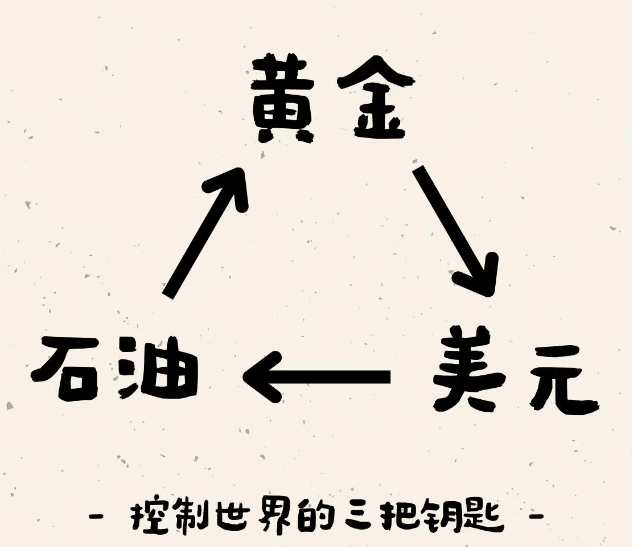Gold, the US dollar, and oil—these three keys firmly control the lifeblood of the world economy. And they are all in the hands of the United States. How did the US set up this grand strategy step by step? It all began with the close tie between gold and the US dollar.
In 1944, the Bretton Woods system was established, linking the US dollar to gold, with 35 dollars convertible to 1 ounce of gold. Other countries' currencies were linked to the US dollar. This meant that global funds revolved around the US dollar, which was backed by gold, creating a stable monetary system. However, in 1971, due to fiscal pressures from the Vietnam War and other factors, the United States printed a large amount of money, and its gold reserves could not support the inflated dollar. President Nixon announced the decoupling of the dollar from gold, and from then on the dollar became a 'pure fiat currency,' no longer backed by gold.
The question arises, without gold, how can the U.S. dollar maintain its 'top' position? The turning point comes with oil.
In 1973, the first oil crisis broke out. On June 8, 1974, the United States signed (U.S.-Saudi Arabian Economic Cooperation Agreement) with Saudi Arabia. Although it did not explicitly require Saudi Arabia to settle oil in U.S. dollars, both sides reached a tacit agreement: Saudi Arabia would invest most of its oil revenues in U.S. Treasury bonds and dollar assets, while the U.S. would provide military protection to ensure the safety of the Saudi royal family. This arrangement gave rise to the 'petrodollar' system. Global buyers must use U.S. dollars to purchase oil, which means as long as the world relies on oil, it cannot be separated from the dollar.
The secret of the triangular relationship is revealed: gold once supported the dollar, oil replaced gold, and the world relies on the dollar because of oil. Gold, oil, and the dollar form a triangular system that controls the global economy. The U.S. can print money at no cost; the world buys oil with dollars, meaning the U.S. essentially 'takes global resources for free.' This is the dollar's hegemony.
A change is coming in June 2024, as the 50-year agreement expires and Saudi Arabia chooses not to renew it. Currently, nearly 80% of global oil is still settled in U.S. dollars, while about 20% is conducted in other currencies. Is the dollar's dominant position in the oil market being weakened? In fact, the impact is not as severe as imagined, because after receiving other currencies, Saudi Arabia mostly converts them into dollars and reinvests in U.S. assets. However, in the long run, this may be the first step toward ending the dollar's hegemony.
From gold to oil, the U.S. dollar has always held the world's economy by the throat. Understanding the relationship between gold, oil, and the dollar is key to truly grasping the underlying logic of global economic operations.#美联储降息


